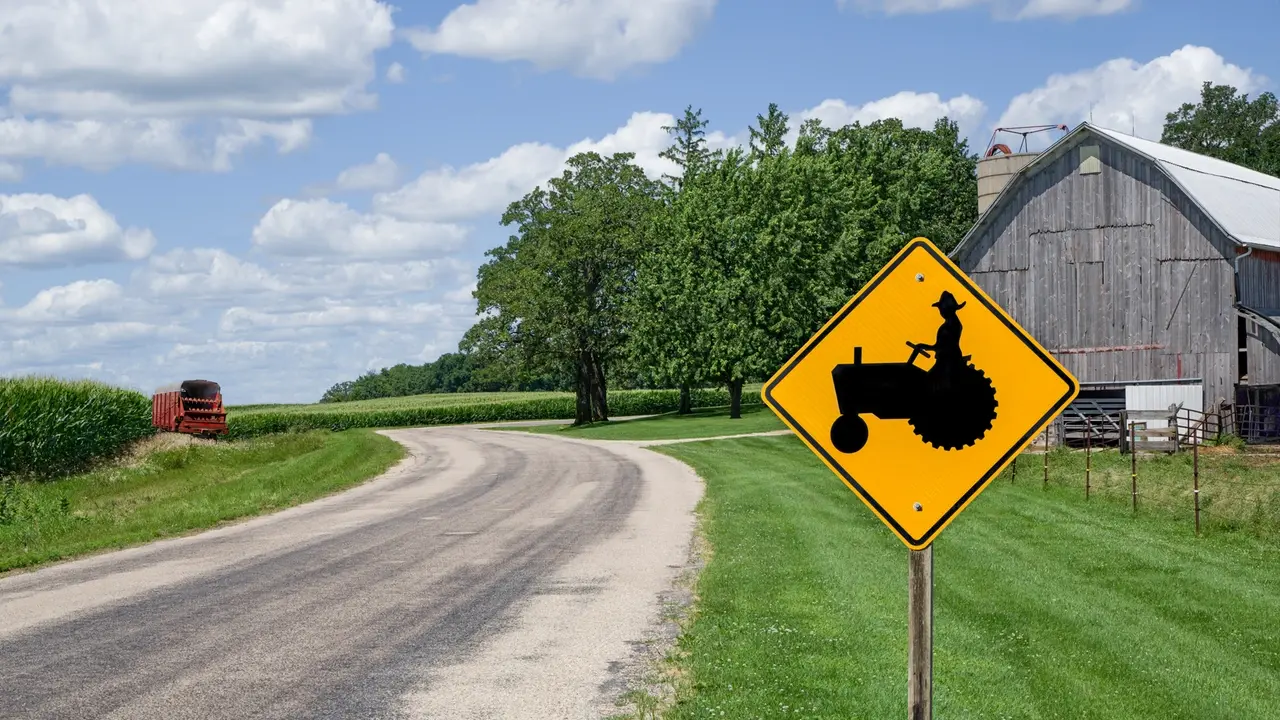A fertilizer industry expert says there could be further disruptions in the supply chain from...
Triple Threat to Farmers: Stress, Safety Shortcuts and Shrinking Rural Health Care

A story by Jennifer M. Latzke
I was about 8 or 9 years old when my dad took a shortcut while working on a split-rim tractor tire in our farm shop.
He was in a hurry and didn’t have a tire cage, and he’d done this a million times — he had a million reasons for his actions that day. Unfortunately, his luck ran out. The tire exploded, and he suffered a catastrophic injury to his hand.
Fortunately, this was in the mid-1980s, and the local emergency room, just 25 minutes away, was fully staffed. There were doctors on call who worked quickly and efficiently to not only save my dad’s hand, but also its dexterity.
Today, my dad doesn’t really complain about that hand — or talk much about that close call. But after that, he built a tire cage, and he rarely took shortcuts again.
I share that story because a friend the other day brought up that we are quickly approaching a convergence of factors in rural Kansas that could lead to catastrophe for farmers like my dad, who need emergency care within minutes to save limbs — and lives.
Storm front No. 1 is the massive stress factors piling up on farmers right now. They can’t control the weather, and drought or violent spring storms are going to do to the crop what they’ll do. Rising input costs, rising interest rates and low crop markets are going to add to that stress, though.
Top that bubbling cauldron with family obligations from both aging parents and growing children, spouses who would like to see their farmer more than once a week, the increasing cost of living and raising that family, and employers who may or may not be cutting shifts because of outside economic factors. Is it any wonder that our farmers are suffering from chronic stress?
So, what’s a little stress? You’re the rocks of the farm, right, farmers?
Well, how’s that ticker of yours? I bet you’ve got bottles of Tums in every cab, and in three rooms of the house and office to help that stomach of yours. Bet you’ve also had more than a few colds lately that you couldn’t shake off as fast as you could in the past, right?
And that clinking sound from your trash can, that’s just from a couple of the boys coming over for shop time this weekend, right? That couldn’t possibly be from your own beverage consumption when they’re not around. Right?
Maybe you’ve also found yourself blowing up over things that normally wouldn’t set you off. You apologized to your young son or daughter for losing your cool, so everything’s OK. But you caught them wincing when you raised your voice the other day. And that’s probably the one that worries you the most.
That’s chronic stress coming out, friends. So, no, you aren’t OK.
Storm front No. 2 is our rural hospitals are underfunded and understaffed, and they're often hours away from farms. Back when my dad had his accident, he was 25 minutes from the closest hospital. And there were doctors who could stabilize his hand and get him into surgery within a half-hour.
But today, there are parts of Kansas where its hours to the nearest emergency room. And those may not have the staffing or the equipment and facilities to handle catastrophic injuries that farmers face. Machinery can mangle extremities in seconds. Falls from grain bins and high structures can cause spinal and brain injuries. And livestock can turn on you in a blink, breaking ribs and causing internal bleeding.
Precious minutes can decide if you’ll walk again, if you’ll bleed out in a field, or if your family will be bringing you home to recuperate.
When storm front 1 collides with storm front 2, we get a tornado. Chronically stressed farmer, distracted from getting as much crop to market as possible, cuts safety corners and needs emergency response, which may or may not be available.
So, how do we head this off? Focus on what we can do.
First, get a handle on that chronic stress. Find someone to talk to by visiting kansasagstress.org, or dial 988.
Second, drill safety protocols into your family and your employees. And make them understand that shortcuts aren’t worth lives or limbs.
Third, when political decisions come up that affect the basic funding of rural hospitals or emergency responders, be their champions. Our communities depend on rural hospitals and health care systems to support $220 billion in economic activity, according to the American Hospital Association in 2022.
That’s one out of every 12 jobs.
Even more important, they’re the difference between a hand that twinges with the weather or a prosthesis.
EDITOR’S TAKE:
This story is not confined to Kansas. No, it’s one that reoccurs across America. CAD and AgRally have worked with others to shine a brighter light on the mental health crisis in rural America. We have shared stories previously in this AIR about rural communities in danger due to lack of health care and doctors. That also makes recruiting other businesses or younger people into those communities very difficult. This story puts a personal perspective on what can happen when the three storms of concern collide. Farming/ranching is often noted as one of the most dangerous occupations in the country, up there with forestry, construction and roadwork. Perhaps there is a role you can play by bringing attention to the problem. For instance, you might help garner financial resources for addressing this issue if you live in and service a rural area. It is a serious matter -- one not to be taken lightly!








